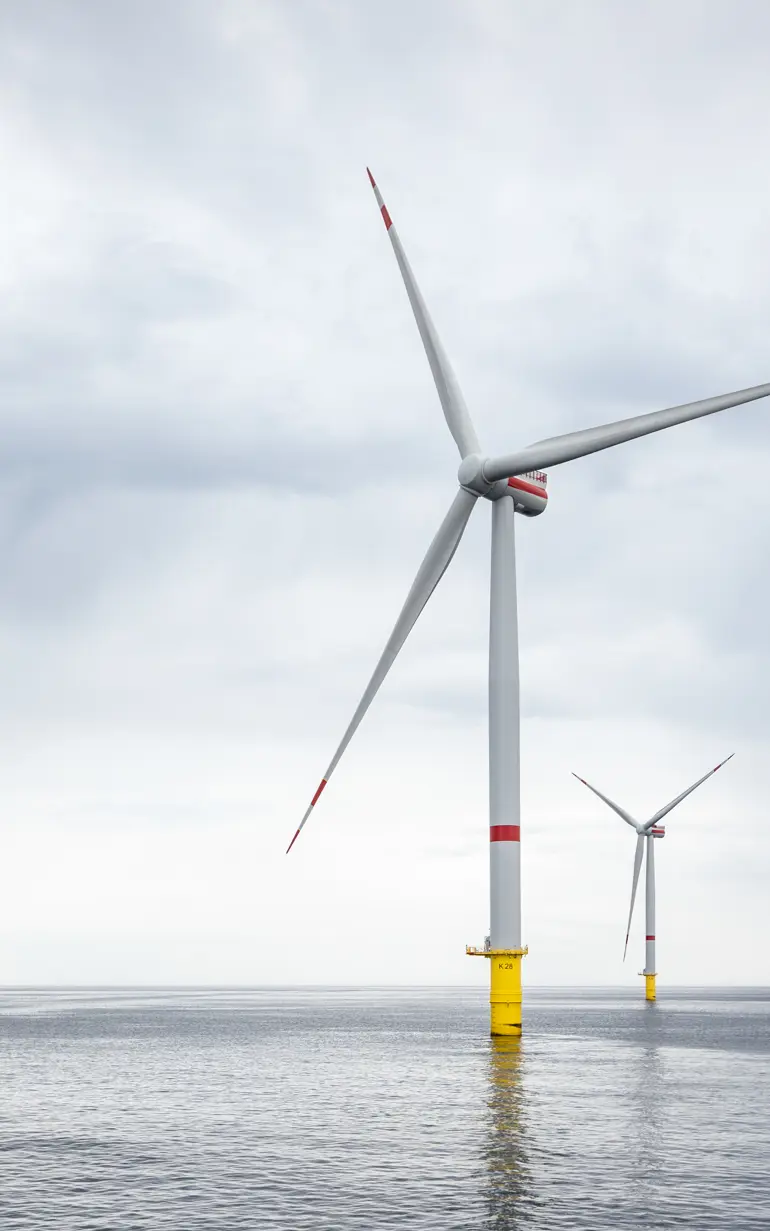
RWE partners with DHI and other leading marine scientists to monitor biodiversity using an ecosystem-based approach at its Kaskasi offshore wind farm
As part of a new partnership with leading scientists to improve monitoring of marine life, global energy company RWE has launched the SeaMe (Sustainable ecosystem approach in Monitoring the marine environment) project at its Kaskasi offshore wind farm off the German coast. The objective is to gain a comprehensive understanding of the interactions between offshore wind farms and the ecosystem through the use of a sound scientific approach, together with new AI-based and CO2-minimising monitoring technologies.
The three-year project ‘SeaMe’ uses innovative monitoring technologies – including a drone and an autonomous underwater vehicle, both equipped with AI-based cameras, as well as environmental DNA sampling. Simultaneous integration of all collected data will enable monitoring of the ecosystem within the Kaskasi offshore wind farm with the goal of reducing carbon intensity of monitoring as well as minimising the impact on marine life.
‘The SeaMe project is a great example of the increasing focus on biodiversity protection in offshore renewables, and we are proud to support the project with our tools and expertise. Our innovation in methods for quantifying biodiversity metrics can make a tangible difference in global efforts to restore and protect biodiversity,’ states Mikael Kamp Sørensen, Executive Vice President for Energy & Ports in DHI.
Innovative and ecosystem-based biodiversity monitoring approach
Offshore wind is vital to tackling climate change and reducing greenhouse gas emissions. However, it is equally important to ensure that possible impacts on the environment are minimised and mitigated. It is already mandatory by law in many countries to assess and monitor the state of the environment where offshore wind farms are developed, built and operated. These legal requirements, however, often focus on monitoring individual groups of organisms (e.g. fish, marine mammals, birds), and there has been no holistic approach to data gathering.
Thanks to new technologies, the simultaneous collection of data and effective data management, the SeaMe project will enable RWE to consider the ecosystem as a whole. One aim of the SeaMe project is to also monitor key components of the marine ecosystems that are usually left out of conventional monitoring programmes, such as small phytoplankton (microscopic algae) and zooplankton (e.g. krill), which play a vital role in feeding larger animals. In addition, a series of physical parameters such as temperature, salinity and oxygen will be measured to explain any possible changes in the distribution and abundance of species.
DHI will contribute to the SeaMe project as data coordinators, data host and data analysers. DHI will develop and host a data portal for RWE, where all the biodiversity data harvested from the main project will be stored and made available to all involved parties. The data portal will enable visualisation of all the different data streams and support scientifically-based communication and dissemination of the collected ecological data.
Furthermore, DHI will process the collected data with their EBM BioQ suite, which is a collection of analytical tools for ecosystem-based management. For example, DHI’s Biodiversity State Indicator (BSI) will be applied to assess the state of biodiversity at the site.
Deployment of more environmentally friendly monitoring techniques
The joint project will investigate how innovative techniques can make monitoring less invasive and more sustainable compared to the current monitoring techniques. Whereas planes and ships are routinely used to monitor birds and mammals, SeaMe targets to replace these methods with a drone equipped with an AI-based camera system. SeaMe will also collect water samples and analyse them for environmental DNA. AI-based fish video monitoring will be performed using an autonomous underwater vehicle. Both methods will replace the traditional means of sampling the fish using nets, making the entire process less invasive. DHI will act as advisors for the data providers, providing advice on sampling strategy for eDNA and other novel monitoring technologies.
Leading marine scientists to contribute their know-how
RWE’s SeaMe project will be carried out in collaboration with prominent partners including the Helmholtz Institute for Functional Marine Biodiversity at the University of Oldenburg (HIFMB), the Alfred Wegener Institute Helmholtz Centre for Polar and Marine Research (AWI), BioConsult SH, the German Research Centre for Artificial Intelligence (DFKI) and DHI.
All tests will take place at RWE’s Kaskasi offshore wind farm, which is located 35 kilometres off the coast of the German island of Heligoland. With a total installed capacity of 342 megawatts, the wind farm is capable of supplying the equivalent of approximately 400,000 German homes with green electricity.
For further information, please contact Jesper Goodley Dannisøe (jda@dhigroup.com) for portal questions and Lars O. Mortensen (lamo@dhigroup.com) for BioQ questions.
How can we help?
With our global network of offices, we make sure you get the right answers to your local needs. Tell us about your water challenges and we will get back to you.